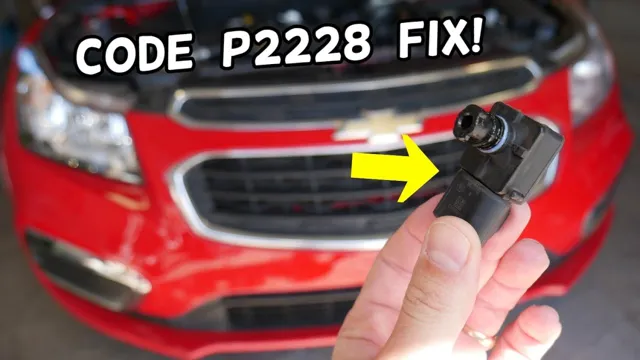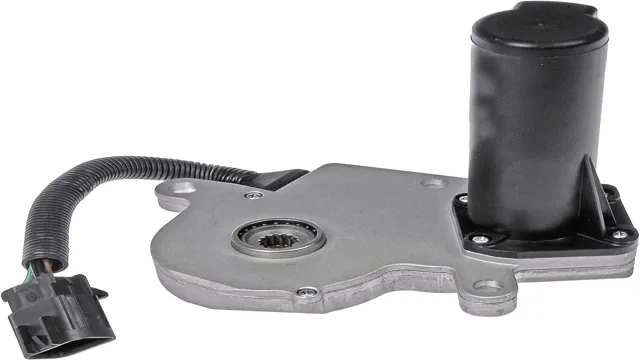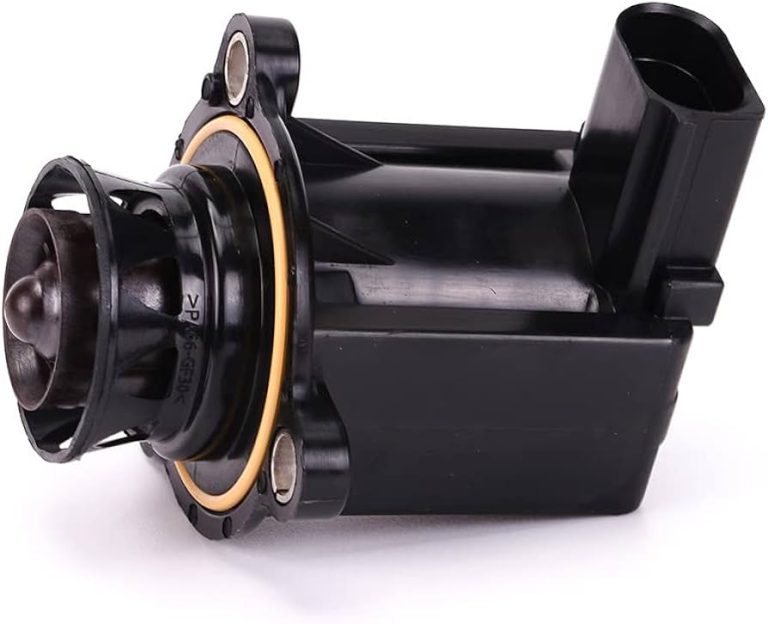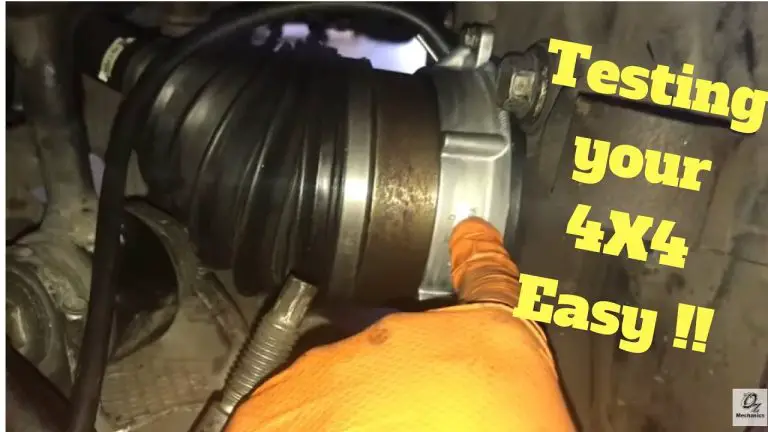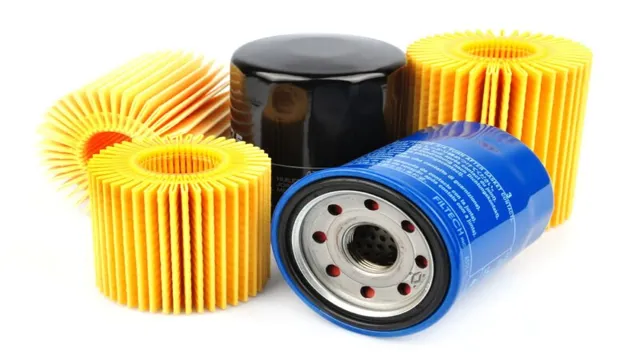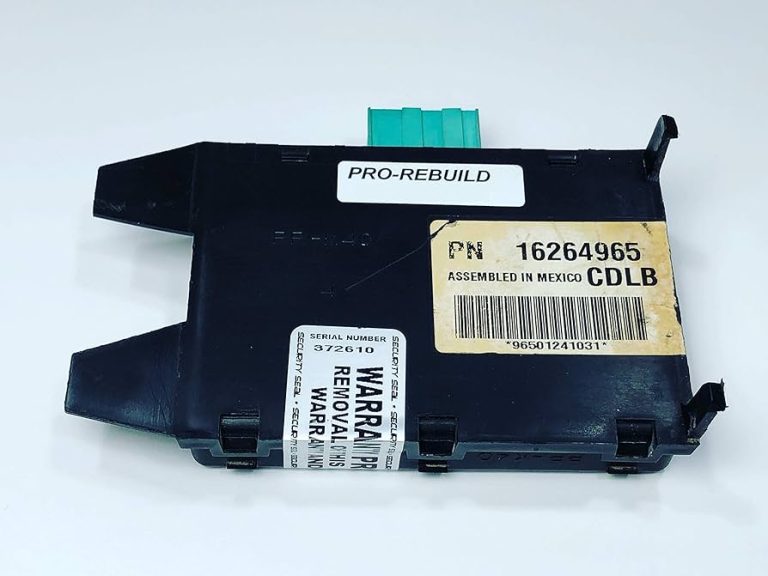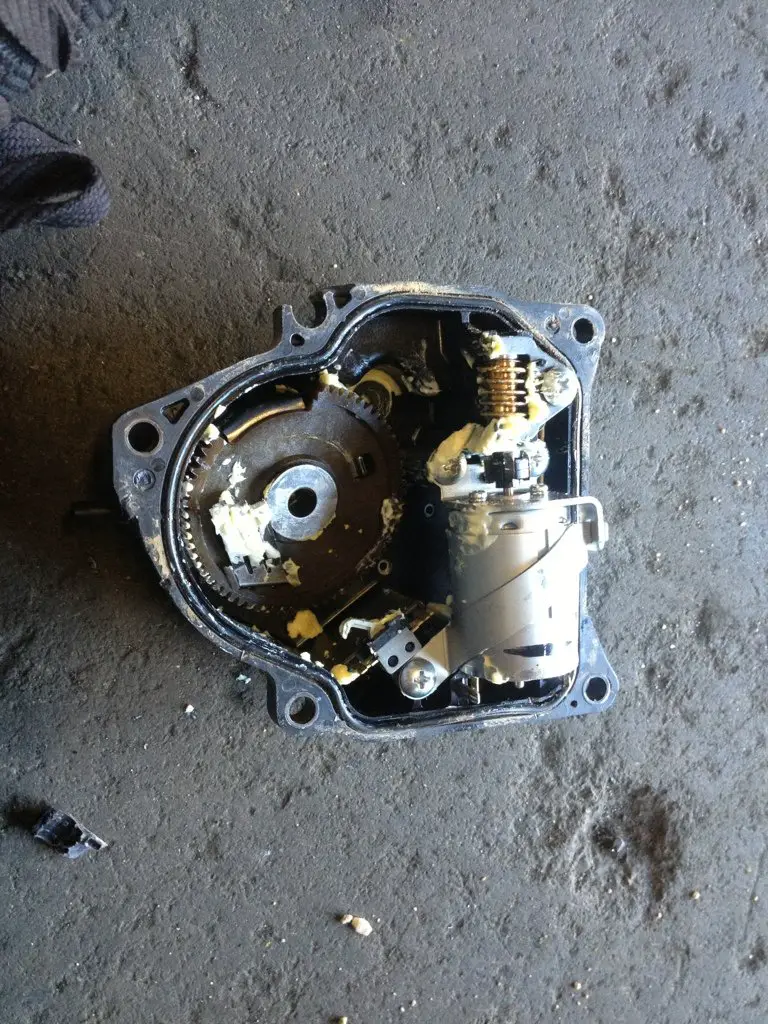How to Calibrate and Troubleshoot Your Barometric Pressure Sensor: A Comprehensive Guide
Have you ever experienced a sudden drop in fuel economy or noticed that your car’s engine just isn’t running the way it should be? It’s possible that your barometric pressure sensor could be to blame. This small yet incredibly important component of your vehicle’s engine management system helps your car adjust to changes in altitude and weather conditions. So, when it malfunctions, it can cause some pretty serious problems.
But don’t worry, fixing your barometric pressure sensor doesn’t have to be a daunting task. With the right knowledge and tools, you can take care of it yourself and get your car running like new again. In this guide, we’ll walk you through everything you need to know about diagnosing and repairing a faulty barometric pressure sensor so you can get back on the road in no time.
Understanding Barometric Pressure Sensors
If your barometric pressure sensor is malfunctioning, it can cause a lot of frustration and even safety concerns for your vehicle. The first step in fixing a barometric pressure sensor is to identify the issue. Most commonly, the sensor may be dirty or corroded, so cleaning or replacing it may solve the problem.
Another possibility is that the wiring or connector to the sensor is damaged or disconnected. In this case, repairing or replacing the wiring can resolve the issue. It’s also important to check if there are any software updates for your vehicle that may address sensor issues.
By addressing these potential problems, you can effectively fix your barometric pressure sensor and ensure safe and reliable performance for your vehicle.
What is barometric pressure and why is it important?
Barometric pressure is the measure of air pressure in a particular area at a certain time. It is important because it affects the weather and can impact human health, particularly those with respiratory issues. Barometric pressure sensors are devices that detect and measure changes in air pressure, providing vital information for a variety of industries such as agriculture, aviation, and weather forecasting.
These sensors can help predict weather patterns and enable us to take necessary precautions to protect ourselves from any adverse conditions. They’re also essential in measuring altitude and have applications in GPS technology. Barometric pressure sensors are incredibly versatile and can be used in various environments, making them a crucial tool in understanding our atmosphere.
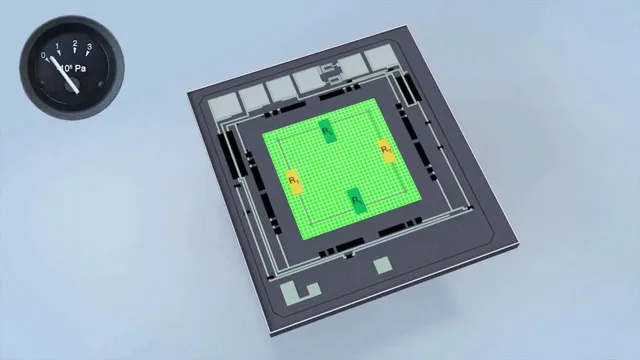
What does a barometric pressure sensor do?
A barometric pressure sensor is a device used to measure the atmospheric pressure in a specific region. It is designed to convert the air pressure data into an electrical signal for viewing on a display screen or transmitting to a computer system. The sensor utilizes a mechanical diaphragm that moves as the pressure changes, creating an electrical current proportional to the applied pressure.
Barometric pressure sensors are widely used in various industries such as aviation and meteorology, where it is essential to monitor pressure changes accurately. By understanding the barometric pressure using the sensor, it can help predict weather changes or even altitude measurements in airplanes. In summary, a barometric pressure sensor plays a crucial role in measuring atmospheric pressure and providing valuable data for numerous applications.
Signs Your Barometric Pressure Sensor Needs Fixing
If you’re experiencing issues with your vehicle’s barometric pressure sensor, it’s important to address the problem as soon as possible to avoid further damage. Some signs that your sensor may need fixing include a check engine light that won’t turn off, a decrease in fuel efficiency, and rough idling or stalling. You may also notice a lack of power when driving or difficulty starting your car.
If you suspect that your barometric pressure sensor needs fixing, it’s crucial to take your vehicle to a qualified mechanic who can diagnose and repair the issue properly. Trying to fix the sensor on your own may result in further damage to your vehicle. In some cases, a faulty sensor may simply need to be cleaned or replaced, while other times, more significant repairs may be necessary.
Regardless of the issue, taking the time to fix your barometric pressure sensor can help your car run more smoothly and efficiently, saving you both time and money in the long run.
Poor fuel economy and engine performance
If you’re experiencing poor fuel economy or engine performance in your vehicle, it could be a sign that your barometric pressure sensor needs fixing. This sensor plays a crucial role in regulating the amount of air that flows into the engine, which in turn affects fuel efficiency and overall performance. A malfunctioning sensor can cause the engine to run rich or lean, leading to a decrease in fuel economy and increased emissions.
Additionally, you may notice problems with acceleration, rough idling, and even stalling. If you suspect an issue with your barometric pressure sensor, it’s important to have it diagnosed and repaired by a professional technician to ensure optimal performance and efficiency. Don’t let a faulty sensor continue to impact your driving experience – get it fixed today.
Dashboard warning lights
Dashboard warning lights are often a source of anxiety for drivers, but they serve an important purpose in alerting us to potential issues with our vehicles. One such warning light that drivers may encounter is the barometric pressure sensor warning light. This light indicates that there is a problem with the sensor that measures the air pressure inside the engine.
If this sensor is not functioning properly, it can cause issues with the engine’s fuel-air mixture, leading to poor performance, reduced fuel efficiency, and even damage to the engine over time. Signs that your barometric pressure sensor may need fixing include a decrease in gas mileage, rough idling, or difficulty starting the engine. If you are experiencing any of these symptoms, it is important to have your vehicle inspected by a qualified mechanic to ensure that any issues with the sensor are identified and fixed before they can cause further damage.
Check engine codes
If you’re seeing a “check engine” light on your car dashboard, there’s a good chance that it’s being caused by a problem with your barometric pressure sensor. This sensor is responsible for measuring the air pressure inside your car’s intake manifold, which helps your engine to determine how much fuel it needs to run efficiently. Without accurate readings from the barometric pressure sensor, your engine can become unpredictable, resulting in rough idling, stalling, or poor performance.
The good news is that fixing a faulty barometric pressure sensor is usually quite straightforward – any reputable mechanic should be able to diagnose the problem and replace the sensor quickly and easily. So, if you experience any of these signs, it’s time to bring your car to a professional and have your sensor checked. With a working barometric pressure sensor, you can expect your engine to perform at its best, giving you better gas mileage, a smoother ride and a safer journey.
How to Fix Your Barometric Pressure Sensor
Is your barometric pressure sensor acting up? You may experience issues with your car’s performance if this sensor is not working correctly. Fortunately, fixing a barometric pressure sensor is not a complicated task. Firstly, locate the sensor on your car’s engine and disconnect it from its electrical connector.
Clean the sensor with a specialized cleaning product and a soft-bristled brush, ensuring that all grime and dirt are removed. You may also need to check if the sensor is damaged or not functioning. If it is defective, it will need replacing, and you should consult a professional mechanic to do this.
Finally, reattach the sensor to its connector and start your car to check if the issue has been resolved. Overall, fixing a barometric pressure sensor can be done with minimal effort and may help improve your car’s performance.
Step-by-step guide to replacing the sensor
If you’re dealing with a malfunctioning barometric pressure sensor, don’t worry, it’s a relatively simple fix that you can do yourself! Here’s a step-by-step guide to replacing the sensor and getting your vehicle back to normal. The first step is to locate the sensor; it’s typically located on or near the intake manifold. Then, disconnect the negative battery cable to ensure safety.
Next, carefully remove the sensor from its housing and disconnect the electrical connector. Once the old sensor is out, insert the new sensor into the housing and reconnect the electrical connector. Tighten the sensor housing to the manufacturer’s specifications, and finally, reconnect the negative battery cable.
That’s it! Your new sensor should be ready to go to work. Don’t forget to clear any error codes, and take your car for a test drive to ensure everything is working as it should. By following these simple steps, you can fix your barometric pressure sensor in no time and save yourself a trip to the mechanic.
Cleaning the sensor and other maintenance tips
If you’re experiencing problems with your barometric pressure sensor, cleaning it might be the solution. A dirty sensor can give inaccurate readings, leading to issues with your electronic devices. To clean your sensor, you’ll need a clean, lint-free cloth and some isopropyl alcohol.
Firstly, ensure that your device is turned off and remove the sensor. Gently wipe the sensor down with the cloth and a small amount of isopropyl alcohol. Leave it to dry completely before reinserting it into your device.
By cleaning the sensor, you should see an improvement in the accuracy of your readings. Other maintenance tips include checking for updates and calibration, replacing the battery if necessary, and storing your device properly. Remember, regular maintenance can prevent issues with your barometric pressure sensor and ensure its longevity.
When to Seek Professional Help
If you’re wondering how to fix your barometric pressure sensor, sometimes it’s better to leave it to the professionals. While there are some general steps you can follow and troubleshooting you can do on your own, such as checking connections and resetting the sensor, more complex issues may require specialized knowledge and equipment. A professional mechanic or technician will be able to diagnose the problem more accurately, replace any faulty parts, and calibrate the sensor to ensure it’s functioning properly.
Attempting to fix a barometric pressure sensor on your own without the proper knowledge and tools could lead to further damage and potentially even more expensive repairs down the line. When in doubt, it’s always best to seek professional help to avoid any unnecessary risks or complications.
Situations where a professional may be needed
Deciding when to seek professional help can be difficult, but it’s important to know when to reach out for support. For example, if you’re struggling with mental health issues, it may be time to seek the help of a professional therapist. They can help you work through your problems and provide a safe space for you to vent your feelings.
Other situations where a professional may be needed include legal issues. If you’re dealing with a complex legal matter, like a divorce or a criminal charge, hiring an attorney can be essential to achieving a positive outcome. Additionally, if you’re facing a major life change such as buying a house or starting a business, consulting a financial advisor can help you set realistic goals and develop a plan to achieve them.
Whether it’s mental health, legal, or financial, don’t hesitate to seek out the help of a professional when you need it. It’s always better to ask for support than to struggle on your own.
Choosing a qualified mechanic or repair shop
When it comes to car maintenance, it’s essential to know when to seek professional help. If you notice any unusual sounds, smells, or vibrations when driving your car, it’s best to take it to a qualified mechanic or repair shop. Ignoring these warning signs can lead to more significant problems down the road, resulting in costly repairs.
Additionally, suppose your car is due for regular maintenance services such as oil and filter changes, tire rotations, or brake inspection. In that case, it’s crucial to take it to a qualified professional. Choosing a trustworthy and reputable mechanic or repair shop is also essential.
Look for one with experienced and certified technicians, positive customer reviews, and good track records. Avoid being swayed by dealership marketing tactics and instead consider recommendations from friends and family or online forums. A qualified mechanic or repair shop will provide you with quality services, prevent future problems, and ultimately save you money in the long run.
Conclusion
Fixing a barometric pressure sensor can seem daunting, but with a little bit of know-how and determination, you’ll be soaring to new heights in no time. Keep your head up, stay grounded, and don’t let atmospheric pressure get you down. With these tips and tricks, you’ll be a pressure-sensing pro in no time – because when it comes to barometric pressure, it’s all about the pressure you can handle!”
FAQs
What is a barometric pressure sensor?
A barometric pressure sensor is a device that measures the atmospheric pressure in an area and provides data to other systems to help with weather forecasting, altitude measurements, and more.
How do you know if your barometric pressure sensor is faulty?
There are a few signs that your barometric pressure sensor may be faulty, including inconsistent or incorrect weather data, issues with altitude measurements, and engine problems in your vehicle. A diagnostic scan can help confirm a faulty sensor.
Can a faulty barometric pressure sensor affect my car’s performance?
Yes, a faulty barometric pressure sensor can cause problems in your vehicle’s engine performance, including rough idling, poor acceleration, and decreased fuel efficiency.
How can I fix a faulty barometric pressure sensor?
The best way to fix a faulty barometric pressure sensor is to replace it with a new, functioning one. However, before doing so, it’s important to diagnose the issue to ensure the sensor is the root cause of the problem. Consulting a professional mechanic is recommended for this maintenance task.

